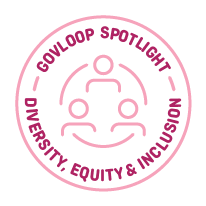 The concept of diversity was first introduced in Congress in 1943 with an executive order signed by then-President Harry Truman to desegregate the armed forces. Today, diversity seems to be a popular subject discussed by society and leaders almost to a fault. Companies have placed emphasis on diversity with hopes to promote better work environments and interpersonal relationships among workers.
The concept of diversity was first introduced in Congress in 1943 with an executive order signed by then-President Harry Truman to desegregate the armed forces. Today, diversity seems to be a popular subject discussed by society and leaders almost to a fault. Companies have placed emphasis on diversity with hopes to promote better work environments and interpersonal relationships among workers.
 The ultimate goal for diversity and inclusivity in the workplace is to allow employees to bring their true selves to the workplace with no reservations about who they are.
The ultimate goal for diversity and inclusivity in the workplace is to allow employees to bring their true selves to the workplace with no reservations about who they are.
For many years this term has been difficult to define, although most believe it is defined by varying distinct human characteristics that are either internal or external in nature. There are several factors employers must consider when dealing with this ideology.
Internal factors are natural things you are born with and cannot change, even if you want to:
- Age
- Ethnicity
- Race
- National origin
- Gender
- Mental ability
- Sexual appearance
- Physical appearance
External factors are situated outside, apart from or beyond individuals. According to researchers, we are not born with these factors but can be heavily influenced and controlled by them:
- Socioeconomic status
- Geographic location
- Marital status
- Income
- Political preference
- Religious or spiritual preference
- Work experience
- Cultural beliefs
Internal and external factors should be considered in the workplace to reduce stereotypes and biases, particularly to prevent discrimination and racism. Researchers believe that unconscious thinking stores up past feelings and thoughts, which can manifest themselves daily during unexpected situations. Researchers have also found that a lack of understanding for diversity can cause unconscious biases to erupt and negatively impact how people view one another. Additionally, unconscious biases can limit growth and progress in the workplace.
According to Catalyst.org, harmful types of unconscious bias include:
- Ageism – Discriminating against someone on the basis of age, which affects women more than men.
- Affinity – The tendency to gravitate towards people similar to ourselves.
- Confirmation – The tendency to seek or favor information that confirms beliefs we already hold.
- Beauty – Judging people, especially women, based on what we think is attractive, subsequently tending to view them more positively and treat them more favorably.
- Conformity – When your views are influenced by the view of others. This often happens in a group setting and is similar to groupthink.
- Gender – Simply favoring or preferring one gender over another.
- The halo effect – After learning something impressive about a person, tending to think more highly of them than you would in other circumstances.
- Weight – Judging a person negatively because their weight is heavier than average.
Consequently, it is wise for every organization to strive towards creating a workplace that is free from biases. Employers should build a culture that is all-inclusive, where everyone is empowered to have a viewpoint and feel respected while voicing an opinion. This way, employees feel welcomed, included, empowered and valued regardless of internal or external factors.
To build an inclusive workforce, senior leadership must partner with supervisors, managers, human resources, equal opportunity councils and other leaders to find solutions to help build an inclusive work environment. Leaders must be role models and think strategically to raise awareness at every level to create a common purpose environment. They must also ask hard questions such as:
- Are women and men equally represented within leadership?
- Do we have employees from different religions and cultures represented?
- What about people from different age groups? Are they equally represented?
From the top down, leadership should mirror and represent diversity, which will signify to the rest of the workforce that inclusion is a priority. This way employees will begin to bring their true selves into the workplace.
Interested in becoming a Featured Contributor? Email topics you’re interested in covering for GovLoop to [email protected]. And to read more from our Spring 2021 Cohort, here is a full list of every Featured Contributor during this cohort.
Wanda Dandridge is a subject matter expert on financial management systems for the Defense Logistics Agency (DLA) Energy located at Fort Belvoir, Virginia. Her government career spans over 15 years, starting as an Army intern in financial management, then subsequently emerging as a transformational leader with DLA specializing in budget analysis, logistical support and employee development. Wanda’s greatest career accomplishment is receiving the Federal Employee of the Year Award with DLA Energy Pacific in 2012. Her philosophy is to lead by example while fostering others for their desired purpose. She is a Certified Defense Financial Manager (CDFM) who enjoys volunteering in her local community.
Originally published April 27, 2021.





This article highlights the importance and benefits of diversity by discussing diversity as being a key attribute in the workplace because diversity allows an employee as stated to, “Bring Your True Self to the Workplace”. In other words, the employer does not take a cookie cutter approach towards their employees. Rightly so, the employee can be themselves, “With no reservations about who they are” which ultimately allow the employee to bring new perspectives into the team subsequently “building an inclusive workforce”. Great article to read!
Hi Janice -Thank you for your comment and understanding how important it is to be “who you are” in the workplace. Hope you get a chance to read my other articles. Thank you.